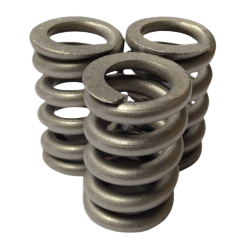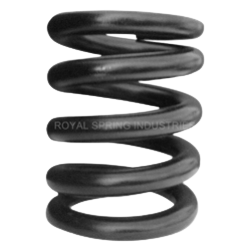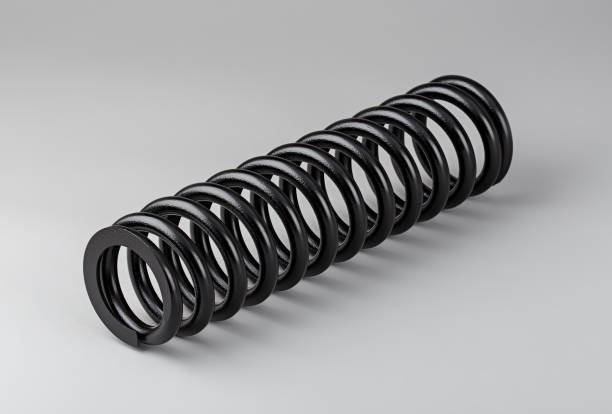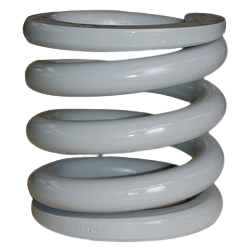Compression Spring




Compression Spring manufacturers in India :
We are heavy duty Compression Spring manufacturers in India for Railway Bogie / Wagon Spring, Automobile suspension, heavy duty Machinery and others engineering appliances. Our manufacturing capacity is :
- Wire Dia. – upto 70 mm.
- Outer Dia. – upto 500 mm.
- Free height – upto 1000 mm.
- Total coils – As per user’s requirement.
- Load capacity – upto 40 Tons. (per pc.)
Raw-material grades used in Compression Spring manufacturing :
The Raw-material used in Compression Spring manufacturing plays a crucial role in determining the Spring’s strength, durability, performance and suitability for specific applications. Compression Springs are typically made from high quality Alloy Steel (Spring Steel) and the choice of material or grade is depends on the Spring’s intended use, operating environment, load-bearing capacity and other factors such as corrosion resistance. Here are the Raw-material grades commonly used :
- BS:970 EN-42
- BS:970 EN-45
- BS:970 EN-47
- 50Cr.V4
- 50Cr.4V2
- 51Cr.V4
- 50Cr.MoV4
- 50Si7
- 55Si7
- 60Si7
- SUP-9
- SUP-9A
- SAE-5160
- IS:4454 Part-1 Grade-2
- IS:4454 Part-1 Grade-2D
- Stainless Steel
- others similar foreign grades JIS, ASTM etc.
Painting and Coating used in Compression Spring manufacturing :
Painting and Coating are commonly used after Compression Spring manufacturing to enhance the Springs’ performance, durability and aesthetic appearance. They are :
- Synthetic Enamel Paint
- Powder Coating
- Phosphate
- Zinc Coating
- etc.
Compression Spring manufacturing process :
A Compression Spring is made through several key stages, starting from Raw-materials to ending with a finished, functional Spring. Below is a step-by-step breakdown of Compression Spring manufacturing process :
- Raw material Dimension Checking
- Raw material Chemical Testing
- Centre Less Grinding
- Both End Forging
- Bar Heating in Furnace at approx. 950º C
- Coiling on Coiling Pitching Machine
- Oil Quenching for Hardening
- Tempering in Furnace at approx. 450º C
- Scragging Test
- Height Checking
- End Grinding
- Dimension Checking
- Load Testing
- Shot Peening
- Surface Oiling
- Painting
- Coating
- Packing
- Delivery
We are the best Compression Spring manufacturer :
Our 40 years experience : We are the best Compression Spring manufacturer with four decades of expertise in this industry. We have honed our skills and knowledge to superior Compression Spring supply. Our extensive experience ensures that we understand the nuances of quality and performance like no other.
Advanced quality control system : We utilize state-of-the-art control systems to monitor and maintain the highest standards of production. Our technology ensures precision and consistency in every Compression Spring supply. We are also ISO 9001:2015 certified.
Lowest cost : We offer the most competitive prices in the market of Compression Spring supplying without compromising on quality. Our efficient manufacturing processes and cost-effective solutions enable us to provide the best value for your investment.
Guaranteed performance : We stand behind our Compression Spring manufacturing with a guaranteed performance. Our rigorous testing and quality assurance processes ensure that every Spring meets the highest standards of durability and functionality.
Worldwide customer satisfaction : Our commitment to quality and service has earned us the trust of buyers worldwide. We take pride in our strong reputation for reliability and excellence in India and global Compression Spring supply market.
